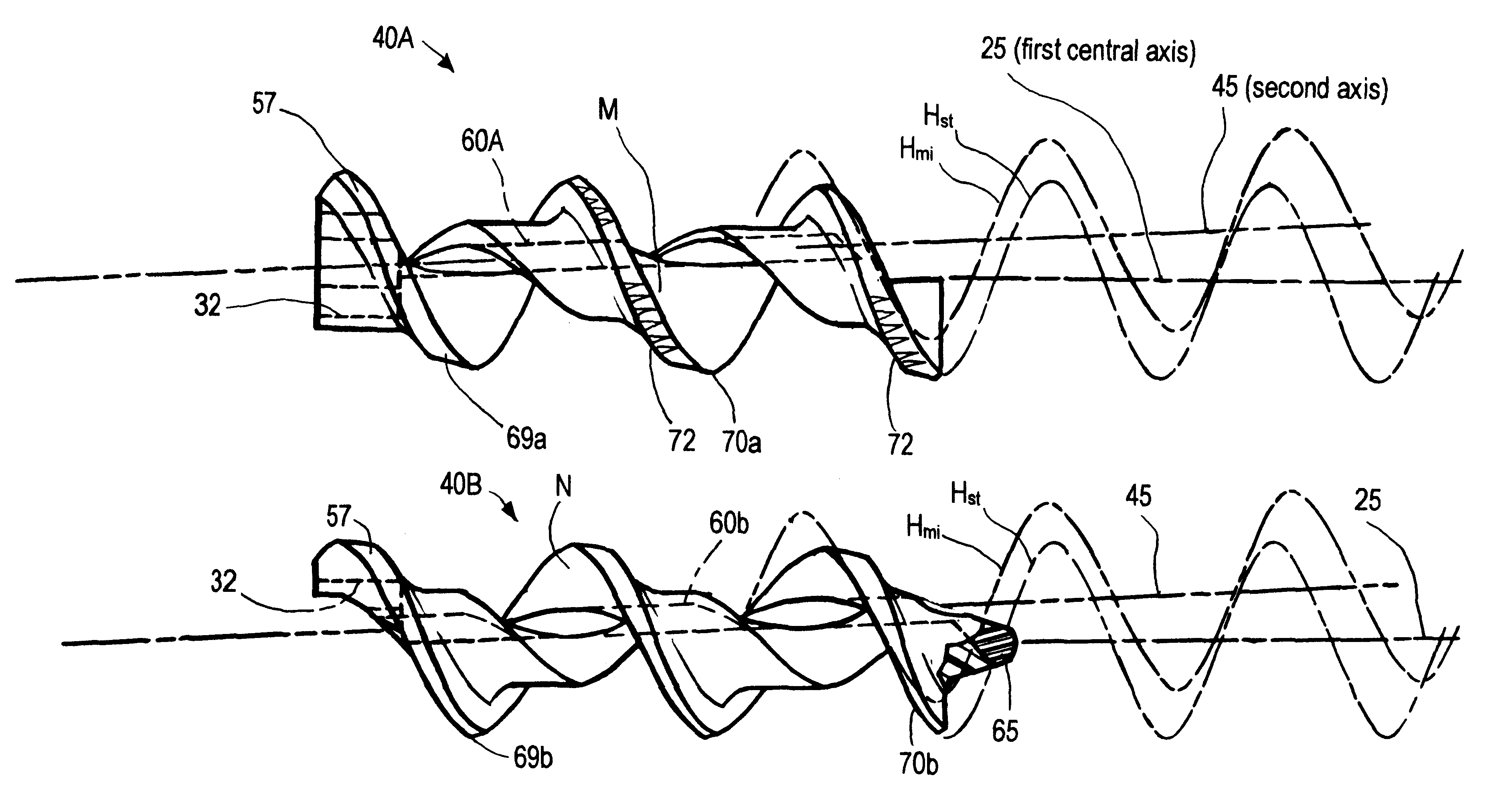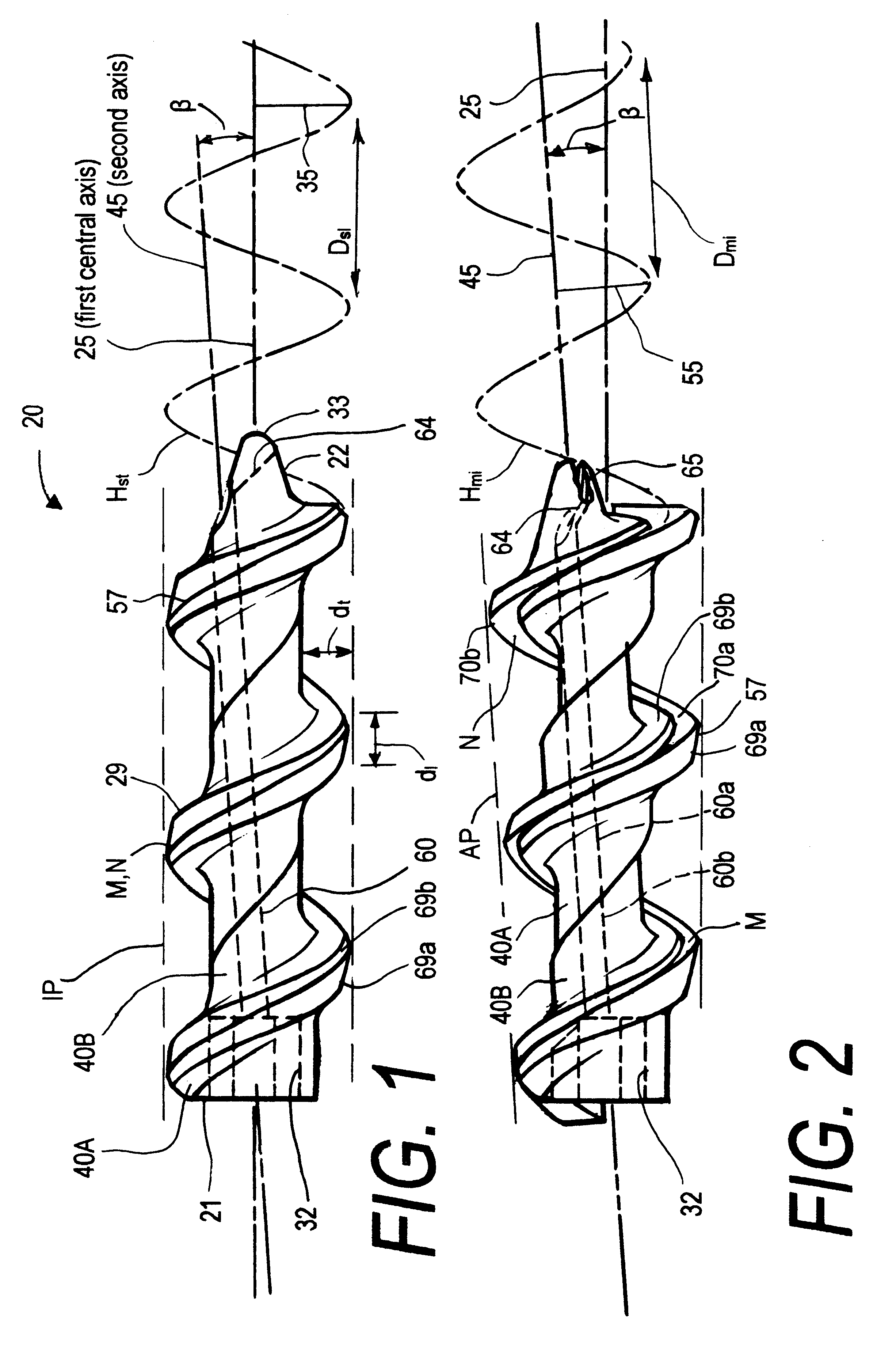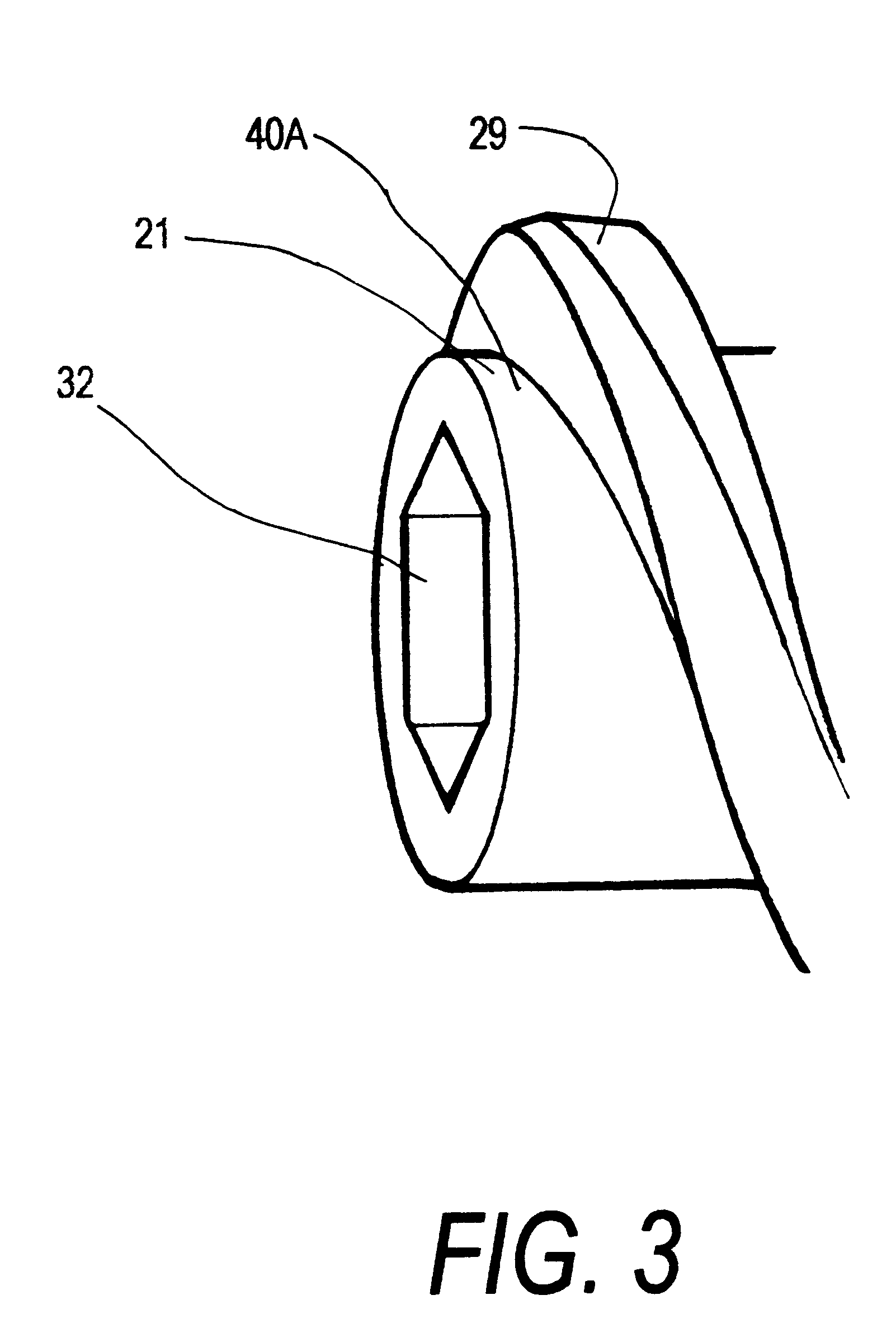Offset helix surgical fixation screws and methods of use
a technology of surgical fixation and screw, which is applied in the field of surgical devices, can solve the problems of bone graft migration in the bore, interference-fit screw self-tap in an incorrect direction or divergence, and screw-type fixation device susceptible to loosening and failure,
- Summary
- Abstract
- Description
- Claims
- Application Information
AI Technical Summary
Benefits of technology
Problems solved by technology
Method used
Image
Examples
Embodiment Construction
1. Type "A" Offset Helix Fixation Body. By way of example, FIGS. 1 and 2 depict a Type "A" offset helix fixation body or screw body 20 adapted for securing a suture or elongate graft in a bone mass. Several dimensions and helix forms are applicable to all fixation bodies illustrated in the drawings and are indicated as follows:
IP: insertion periphery (i.e., outermost periphery of threaded body 20 in an insertion configuration)
AP: anchor periphery (i.e., outermost periphery of threaded body 20 in an anchor configuration)
H.sub.mi : helix defining the mating interface
D.sub.ml : dimension of spiral lead defined by helical mating interface
M and N: mating surfaces of first and second members, respectively
H.sub.st : helix defining the spiral thread
D.sub.sl : dimension of spiral lead defined by thread
dl: dimension across lands of threads
dt: depth of threads
Referring to FIG. 1, the fixation body 20 is illustrated in an insertion configuration (or first position) with an outer insertion perip...
PUM
 Login to View More
Login to View More Abstract
Description
Claims
Application Information
 Login to View More
Login to View More - R&D
- Intellectual Property
- Life Sciences
- Materials
- Tech Scout
- Unparalleled Data Quality
- Higher Quality Content
- 60% Fewer Hallucinations
Browse by: Latest US Patents, China's latest patents, Technical Efficacy Thesaurus, Application Domain, Technology Topic, Popular Technical Reports.
© 2025 PatSnap. All rights reserved.Legal|Privacy policy|Modern Slavery Act Transparency Statement|Sitemap|About US| Contact US: help@patsnap.com



